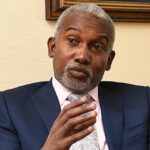The coup in Niger Republic created a standoff between the country and the Economic Community of West African States (ECOWAS). The coup, which led to the toppling of the democratically elected president of the country, Mohammed Bazoum, led to the imposition of sanctions, among which was the closure of borders of ECOWAS countries against Niger.
After a major outcry and pleading, ECOWAS suspended the sanctions, but this was after Niger and two other countries, Mali and Burkina Faso, withdrew their membership from the bloc to form a new confederation by the junta-ruling countries.
The eventual suspension of the sanctions by ECOWAS resulted in Nigeria opening its border. However, Niger initially refused to open its own border, a week after Nigeria did.
The action of Niger has stirred debate on the social media on how the country would survive without importation of goods and services from its neighbour since it is a landlocked country.
- Kukah tasks Nigerians on positive legacies, impactful lives
- Obaseki leads Nigerian delegation to Italian art exhibition
To show that the country can develop without Nigeria’s inputs, an X (formerly Twitter) user, Sy Marcus Herve Traore, posted on March 19 and claiming that Kandadji dam in Niger Republic was undergoing construction.
As part of DUBAWA’s efforts to promote truthful and factual public discourse and fight misinformation and disinformation, our team of fact-checkers has fact-checked the claim.
Claim 1: An X user (@marcus_herve), Sy Marcus Herve Traore, used an image to claim that Kandadji dam in Niger Republic was under construction.
Verdict: The claim is false. Checks on Shutterstock revealed that the dam in the post is Gariep dam in South Africa, not Kandadji dam.
Brief on Kandadji dam
A report by HumAngle stated that the dam is located near the town of Kandadji in Tillaberi region of Niger Republic, and when completed, it would provide 130 megawatts of electricity to the country.
The project is funded by the World Bank, Africa Development Bank, the French Development Agency and the Islamic Development Bank to cost €1.1 billion.
Construction started in 2008 under the presidency of Mamadou Tandja, and was contracted to a Russian company, Zaroubegevodstroï (ZVS), but was later carried out by a Chinese company, Gezhouba Group Company Limited.
The completion of the project was postponed on several occasions and 2025 was given as the new date due to further delays by the COVID-19 pandemic.
Work on the dam was also suspended following the coup in August due to the economic sanctions imposed by ECOWAS.
As at March 28, 2024, the post had 692,600 views with 410 comments, 1,300 re-tweets and 3,100 likes.
“Do you see this? This is the Kandadji dam in construction in Niger. I will tell all the noisy, arrogant and ignorant Nigerians who spend all their time on X saying that Niger doesn’t add any value to Nigeria nor ECOWAS…,” the tweet was captioned.
Verification
The image was subjected to a reverse image search using Tineye and the result brought out 44 results, among which is the image appearing on Shutterstock, an American company that provides stock photography.
The result stated that the image was first found on Shutterstock. A check on Shutterstock showed that the image was captioned, “Dam Wall.” The image was shot by Michael Potter11 and it was published on September 24, 2012.
While the company did not state where the dam is located, further search on Google Search Engine showed that it is the Gariep dam in South Africa.
Pictures of Gariep dam found on X account of the South African government, Flickr and Alamy have similar features with the one on the Shutterstock.
Other results showed that the image is widely used on the internet to accompany topics associated with dams, including on news stories, here, here and here that have to do with reporting on dams.
Conclusion on claim 1
The image is not the Kandadji dam but a stock picture from Shutterstock. While the Kandadji dam is yet to be completed, the picture shows a functioning dam.
Claim 2: Did Nigeria sign an agreement with Niger to discourage construction of dams along Niger River in 2020.
Verdict: Misleading.
Full text
As part of the tweet, Traore claimed that Nigeria signed an agreement in 2020 not to construct a dam on River Niger.
“In July 2020, the Nigerian presidency under @MBuhari signed electricity power export agreements with Niger to discourage construction of dams along Niger River. So, what happened? They signed the agreemens and this is why Nigeria is exporting electricity to Niger,” he tweeted.
Verification
A keyword search on Google Search Engine on “Nigeria signed agreement with Niger not to dam River Niger” brought news stories by Daily Trust and Vanguard newspapers
The stories, which were published in July 2020, quoted a statement by Mallam Garba Shehu, a senior special assistant to former President Muhammadu Buhari on media and publicity, clarifying the electricity debt Niger, Togo and Benin owed Nigeria.
Shehu, in the statement, noted that Nigeria was exporting electricity to the countries due to a bilateral agreement for them not to construct a dam on River Niger as it is the source of power to Nigeria’s Kainji, Shiroro and Jebba dams.
He stated that the agreement was reviewed in 2019.
While it could not be established when Nigeria signed the agreement for Niger not to dam the river, the countries have been managing conflicts that may arise through the Niger Basin Authority. The first agreement was made in 1963, with further agreements and reviews done in 1964, 1980 and 2008.
Conclusion on claim 2
The claim that Nigeria signed an agreement with Niger not to dam River Niger in 2020 is misleading. The first agreement that established the authority was made in 1963; with subsequent reviews, the latest being in 2019.
This report was produced for the DUBAWA 2024 Kwame Karikari Fact-Checking Fellowship, in partnership with Daily Trust Newspapers to facilitate the ethos of truth in journalism and enhance media literacy in Nigeria.

 Join Daily Trust WhatsApp Community For Quick Access To News and Happenings Around You.
Join Daily Trust WhatsApp Community For Quick Access To News and Happenings Around You.


